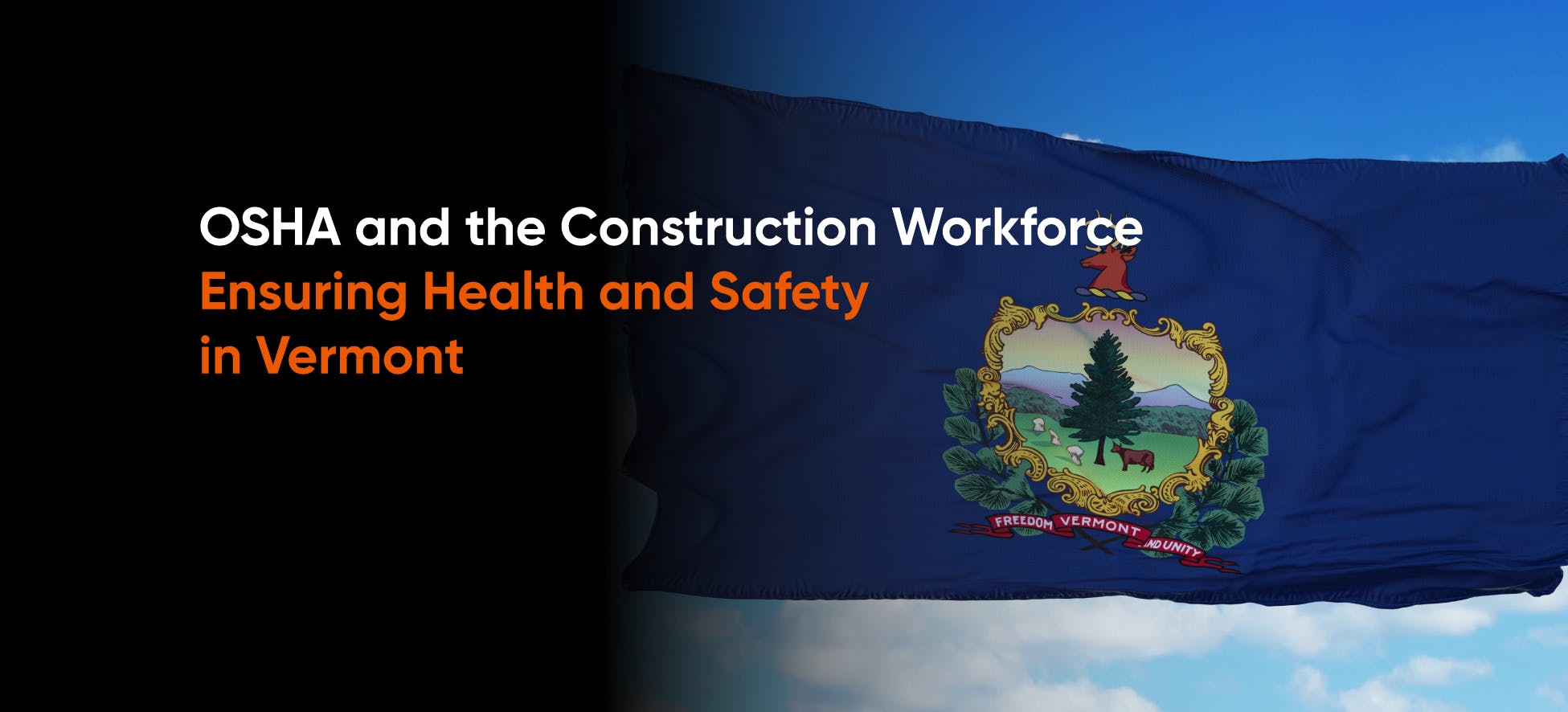The construction industry is the backbone of the American economy, and Vermont is no exception. With a rich history of building and development, Vermont has consistently relied on its construction workforce to maintain and expand its infrastructure. This article will explore the role of the Occupational Safety and Health Administration (OSHA) in ensuring the health and safety of Vermont's construction workforce, highlighting the importance of compliance with OSHA regulations and the benefits of creating a safe work environment.

The Role of OSHA in Construction Workforce Health and Safety
Established in 1970, OSHA is responsible for setting and enforcing workplace safety standards to protect employees across the United States. The construction industry is inherently dangerous, and OSHA's regulations are crucial in minimizing the risks associated with these job sites. In Vermont, OSHA works closely with the state government, employers, and workers to provide a safe and healthy work environment for the construction workforce.
Key OSHA Standards for Construction:
- Fall Protection: Falls are the leading cause of fatalities in the construction industry. OSHA requires employers to provide fall protection systems for six feet or more workers.
- Scaffolding: Construction projects often rely on scaffolding, which can pose significant risks if not properly maintained. OSHA mandates that employers ensure scaffolds are built according to specified standards and regularly inspected for safety.
- Electrical Safety: Electricity is constantly on construction sites, and improper handling can lead to severe injuries or fatalities. OSHA standards address proper grounding, guarding, and maintenance of electrical equipment to prevent accidents.
- Personal Protective Equipment (PPE): Employers must provide workers with appropriate PPE, such as hard hats, safety glasses, and protective footwear, to mitigate potential hazards on the job site.
Compliance with OSHA Regulations in Vermont
To guarantee the wellbeing and safety of the construction workforce in Vermont, employers must adhere to OSHA regulations which require ongoing efforts to maintain a safe work environment, including:

- Developing and implementing a comprehensive safety program: Employers should establish a written safety program outlining specific hazard identification, prevention, and control procedures.
- Training employees on safety procedures: Employers must provide adequate training to ensure they understand and follow safety protocols.
- Conducting regular inspections: Employers should perform routine inspections of the job site to identify and address potential hazards.
- Recordkeeping and reporting: OSHA mandates that employers maintain records of work-related injuries, illnesses, and fatalities and report serious incidents to the agency on time.
The Benefits of a Safe Work Environment
Creating a safe work environment not only fulfills employers' legal obligations but also offers several tangible benefits:
- Reduced workplace accidents: Compliance with OSHA regulations results in fewer accidents and injuries, leading to a healthier workforce and a lower likelihood of costly legal disputes.
- Increased employee morale: Workers who feel safe are more likely to have higher job satisfaction, leading to improved productivity and reduced turnover.
- Enhanced reputation: A track record of safety compliance can elevate a company's reputation, making it more attractive to potential clients and workers.
- Financial savings: Lower workers' compensation costs and fewer lost workdays can lead to significant financial savings for employers.
OSHA Outreach Training and Consultation Programs in Vermont
To assist employers in meeting their health and safety obligations, OSHA offers resources and services, including:

- Outreach Training: OSHA's 10-hour and 30-hour Outreach Training courses cover construction safety topics, providing workers and supervisors with the essential knowledge to ensure a safe work environment.
- On-site Consultation Program: OSHA's On-site Consultation Program offers free and confidential safety and health counseling to small and medium-sized businesses in Vermont. This program helps employers identify and correct workplace hazards, develop and implement adequate safety and health management systems, and qualify for OSHA's Safety and Health Achievement Recognition Program (SHARP).
- OSHA Training Institute (OTI) Education Centers: These centers offer a variety of training courses on OSHA standards and occupational safety and health. In Vermont, the Region 1 OSHA Training Institute Education Center serves employers and workers, providing valuable resources and training opportunities.
- Online resources: OSHA's website (www.osha.gov) contains a wealth of information, including regulations, guidelines, and educational materials that can help Vermont construction employers and workers maintain a safe and healthy work environment.
The Importance of Collaboration and Communication
Effective collaboration and communication between employers, employees, and OSHA are vital for ensuring the health and safety of Vermont's construction workforce. Employers can establish and maintain a safe work environment, prevent accidents, and foster a safety culture by actively engaging with OSHA and utilizing the available resources and services.
- Employer commitment: Employers should demonstrate their commitment to worker safety by prioritizing compliance with OSHA regulations, investing in safety training and equipment, and encouraging open communication about workplace hazards.
- Worker involvement: Workers should be encouraged to participate in safety programs, report hazards, and contribute to developing safety procedures. Empowering workers in this way can lead to a more effective safety culture.
- Cooperation with OSHA: Employers should view OSHA not as an enemy but as a ally in promoting workplace safety. By actively engaging with OSHA and utilizing its resources, employers can improve their safety programs and ensure a healthier workforce.
Conclusion
The construction industry is vital to Vermont's economy, and the health and safety of its workforce are paramount. OSHA plays a critical role in protecting construction workers, and compliance with its regulations is essential for employers. By understanding and adhering to OSHA standards, investing in safety training, and fostering a culture of safety, Vermont's construction industry can continue to thrive while ensuring the well-being of its workforce.

